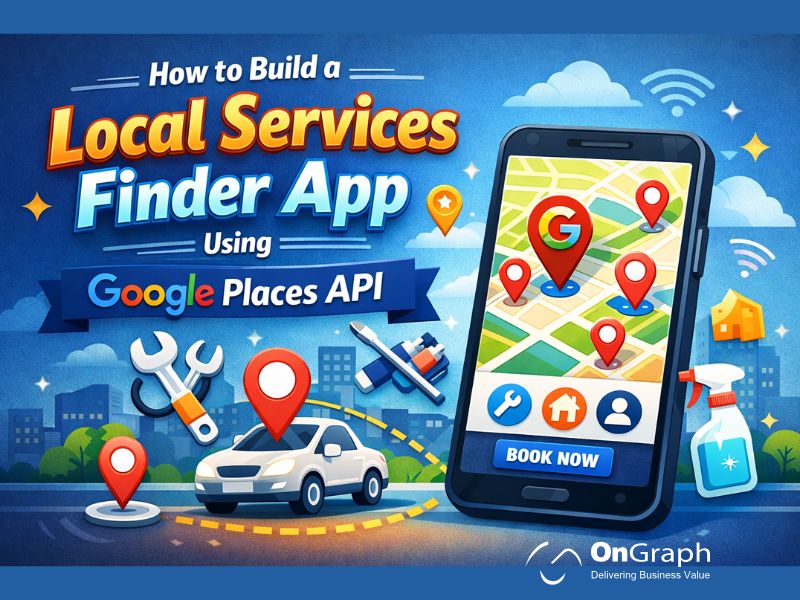In this article
- Why Invest in Taxi App Development in 2025?
- Key Components That Influence Taxi App Pricing in 2025
- How a Kenyan Startup Launched a Scalable Taxi App for $15,000
- Must-Have Features in a Taxi App (Affecting Cost)
- Technology Stack & Cost Impact
- How to Create Taxi App Cost-Efficiently?
- How Much Does It Cost to Hire a Taxi Booking App Development Company?
- Common Mistakes to Avoid
- Future-Proofing: What to Expect in Taxi App Costs Beyond 2025?
- Conclusion
In an era of digital convenience, launching your own ride-hailing service has never been more achievable. But before you dive into development, it’s crucial to understand the taxi app development cost in 2025 and what features, tools, and services are essential to your success. Whether you’re building a local Uber alternative or digitizing your existing taxi fleet, getting your budget right from the start will save you from mid-project surprises.
This guide explores the cost factors, feature planning, tech stack, and real-world examples to help you accurately plan your taxi app investment in 2025.
Why Invest in Taxi App Development in 2025?
The global ride-hailing market is projected to reach $226 billion by 2028, driven by urbanization, increased smartphone penetration, and consumer preference for on-demand transportation. In emerging markets and tier-2 cities, the opportunity is massive due to lack of organized taxi networks.
Businesses are now racing to build efficient and secure ride-hailing platforms with wallet integration, driver subscriptions, real-time tracking, and support for regulatory compliance.
Key Components That Influence Taxi App Pricing in 2025
Your total taxi app pricing 2025 will depend on multiple variables. Here’s a breakdown:
| Component | Estimated Cost (USD) |
| UI/UX Design (Custom) | $1,000 – $3,000 |
| Rider App (Flutter/iOS/Android) | $4,000 – $6,000 |
| Driver App | $3,000 – $5,000 |
| Admin Panel | $2,000 – $4,000 |
| Backend/API Development | $3,000 – $5,000 |
| Deployment (App Stores) | $500 – $1,000 |
| QA & Testing | $1,000 – $2,000 |
| Maintenance (Monthly) | $300 – $800 |
A basic MVP with essential features costs around $10,000–$15,000, while a feature-rich, fully branded version could reach $20,000–$30,000, especially with third-party integrations, multi-language support, and wallet systems.
How a Kenyan Startup Launched a Scalable Taxi App for $15,000?
One of our clients in Kenya, approached OnGraph Technologies to digitize their taxi service. Their priorities:
- A white-label solution to avoid 6–8 months of development.
- Flutter-based rider and driver apps.
- Integration with M-PESA for local payments.
- Admin panel for scheduling, pricing control, and complaint resolution.
- SOS and OTP-based security features.
We deployed a fully customized white-label solution within 45 days at a total taxi software cost of $15,000, including UI changes, security enhancements, and deployment support.
Must-Have Features in a Taxi App (Affecting Cost)
When estimating your taxi booking app development cost, here are features that directly impact scope and pricing:
1. Geolocation & Route Mapping
- Integration with Google Maps API or Mapbox.
- Estimated Cost: $1,000 – $1,500
2. Real-Time Ride Matching
- Driver assignment based on distance and ETA.
- Essential for user satisfaction and performance.
3. Fare Calculation Algorithm
- Automatic fare logic based on distance, surge pricing, and time.
4. Wallet and Payment Integration
- Credit card, UPI, mobile money, and in some regions, crypto wallets.
5. Security Features
- Multi-factor authentication, SOS, and real-time tracking.
6. Admin Panel
- For managing users, drivers, disputes, rates, and promotions.
Adding advanced analytics, loyalty programs, or multi-language support will increase overall ride hailing app development cost.
Technology Stack & Cost Impact
Choosing the right technology not only affects performance but also long-term cost efficiency. At OnGraph, we use:
- Flutter: For fast cross-platform taxi app development.
- PHP (Laravel): Backend flexibility and cost-effectiveness.
- MySQL: Secure, scalable database for all records.
- AWS / DigitalOcean: Cloud hosting that scales as your user base grows.
This stack reduces your time-to-market by 40% and lowers maintenance cost by 25% compared to native solutions.
How to Create Taxi App Cost-Efficiently?
If you want to create taxi app solutions without blowing your budget, here are 3 smart tips:
1- Choose White-Label Base: Reduces time and budget by 50%.
2- Start with an MVP: Focus on core features like booking, payments, and tracking.
3- Outsource to Experts: Offshore teams offer high-quality work at $15–$25/hour vs $75–$150/hour in the US/EU.
How Much Does It Cost to Hire a Taxi Booking App Development Company?
If you’re working with a taxi booking app development company, expect the following engagement models:
| Model | Description | Cost |
| Fixed Price | Ideal for a well-defined scope | $10K–$20K |
| Hourly | Flexible changes possible | $15–$30/hr |
| Dedicated Team | For long-term scaling | $2K–$5K/month per developer |
At OnGraph, we offer fixed-price and milestone-based models for startup founders, helping them reduce time and investment risk.
Common Mistakes to Avoid
- Ignoring App Store Guidelines: Leads to costly rejections.
- Over-Engineering the MVP: Stick to essentials first.
- Underestimating Marketing: Budget for post-launch promotions.
- Skipping QA: Bugs ruin UX and increase churn.
A strategic approach to taxi application development helps you avoid delays, budget overruns, and performance issues.
Future-Proofing: What to Expect in Taxi App Costs Beyond 2025?
With GenAI and ML entering the mobility space, future versions of taxi apps will include:
- AI route optimization
- Driver fraud detection
- Predictive pricing
- Voice-based bookings
This makes it even more important to partner with a reliable taxi mobile app development team that stays ahead of the curve.
Conclusion
The taxi app development cost in 2025 is no longer a barrier—it’s a business decision that can be planned strategically. By understanding the essential components, selecting the right tech stack, and partnering with the right team, you can launch your ride-hailing platform within your desired timeline and budget.
FAQs
The average cost to develop a taxi app in 2025 ranges from $10,000 to $30,000 depending on the features, design, scalability, and customization required. A basic MVP with core functionalities like booking, tracking, and payments may cost around $10,000–$15,000, while a fully customized, white-label app with advanced features such as driver subscriptions, SOS buttons, multi-language support, and third-party integrations can push the cost to $20,000–$30,000 or more. The choice of platform (iOS, Android, or both), technology stack, and backend infrastructure also affect the total price.
The biggest factors influencing cost include:
- Features & Functionality: Real-time tracking, fare calculation, wallet integration, SOS, OTP, etc.
- Platform: Native development for iOS and Android increases costs compared to cross-platform tools like Flutter.
- Customization: UI/UX design changes, branding, and language support add to development hours.
- Backend Complexity: Admin panel, analytics dashboard, driver commission models, etc.
- Third-Party Integrations: Payment gateways, SMS APIs, map services (Google Maps, Mapbox).
Post-launch Support & Maintenance: Ongoing monthly costs for hosting, updates, bug fixes.
Yes, it’s possible to launch a taxi app on a limited budget by:
- Using white-label solutions that offer ready-made base code with customizable branding.
- Starting with an MVP (Minimum Viable Product) that includes just the essential features.
- Outsourcing development to experienced offshore teams that offer competitive hourly rates (e.g., $15–$25/hour).
- Avoiding feature bloat in early stages; advanced functions can be added post-launch as needed.
This approach allows you to go live in 30–45 days and stay within a $10K–$15K budget.
The development timeline depends on the approach:
- White-label or template-based app: 30–45 days (ideal for startups with tight timelines).
- Custom-built app: 4–6 months (or longer) based on complexity, integrations, and team size.
- Hybrid approach: Using a pre-built base and adding custom features can take 60–90 days.
Time also depends on how fast clients provide assets (logo, branding, legal docs) and how quickly testing and app store approvals happen.
For the first release, focus on features that directly affect usability and user experience:
- User Registration (with OTP verification)
- Geolocation & Ride Booking
- Driver Assignment Logic
- Fare Estimation & Real-Time Tracking
- Payment Gateway Integration
- Ride History & Ratings
- Admin Dashboard for Management
Advanced features like loyalty programs, referral systems, or AI-based dispatching can be added later.
Yes, most taxi app ecosystems are built with three key modules:
- Rider App: For booking, payment, and ride tracking.
- Driver App: For accepting rides, managing status, and receiving payouts.
- Admin Panel: For managing users, fares, feedback, complaints, and revenue.
This separation ensures each user group has a tailored interface and functionality, improving the overall experience and system performance.
Post-launch, you’ll need to budget for:
- Server Hosting (AWS, DigitalOcean): $50–$200/month
- Support & Maintenance: $300–$800/month
- API Usage Fees: Google Maps, SMS, etc.
- App Store Developer Accounts:
– $25 one-time (Google Play)
– $99/year (Apple App Store)
- Marketing & Customer Support
These costs ensure the app stays secure, updated, and performant, especially as your user base grows.
About the Author
Let’s Create Something Great Together!
Latest Blog
















